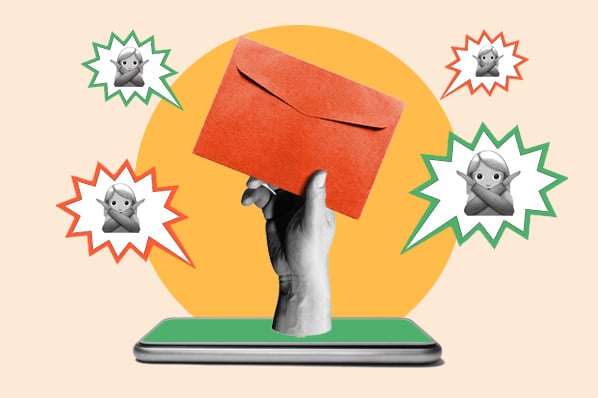There is no one magic formula for outbound sales success. There is no silver bullet subject line that will make everyone open your email. There is no best time to call a prospect.
Yet sales professionals are in a constant search for an elixir. To be honest, that was me at one point, too. However, with a proven system and some guidance, you can discover the follow up strategy that works best for you.
There are a lot of resources out there for identifying and creating your ideal client profile. Numerous posts have been written about creating a targeted leads list. There are hundreds of templates for your initial outreach emails.
That’s all great, but now it’s time to tie all of this together in a broader outbound sales strategy.
When creating your outbound strategy, you need to take into account four considerations:
- Number of touchpoints
- Outreach channels
- Time between touchpoints
- Content of touchpoints
1) Number of Touchpoints
Often times, sales reps will stop reaching out after two or three attempts. The rep thinks “I just gave them my best pitch. If they don’t buy now, I don’t know when they’re going to buy.”
But this is a mistake. The reality is that sales take time, especially big ticket deals. Much of the sales process hinges on where the prospect is in their buying journey, and there’s no real way to know with 100% certainty.
So how many times should you follow up in sales?
Much research (and debate) has been devoted to this topic. While there’s no golden rule and you should find what works best for you, the general consensus among experts is seven or more touches. Here’s one thing that we know for sure: Persistence matters in sales.
Of course, this isn’t the only piece of the equation. Even if there was such a thing as the perfect number of touches -- let's say it is in fact seven -- reaching out this number of times at the wrong intervals through the wrong channels or with the wrong message will doom your campaign.
Let’s look at the other pieces of an effective outbound sales strategy.
2) Outreach Channels
Email isn’t the only way to follow up. Pairing email with phone calls and social media outreach is usually a winning strategy. One effective practice is calling and immediately sending a follow up email.
If you really want to get on the prospect's radar without being a nuisance, add social media to the mix by favoriting a prospect’s tweet and then following them an hour later. When they follow you back, you can then send a direct message via Twitter.
You can use a similar approach on LinkedIn. Comment or "like" a post your prospect has written. However, stay away from Facebook and Instagram interactions. These channels are personal environments and not appropriate for sales talk.
3) Time Between Touchpoints
At what cadence should you check in with prospects? I recommend being a little more persistent early on, then tapering off if the buyer hasn't responded. We’ve seen great results sending the second touch a day or even 12 hours after the first.
Forget about those reports and articles about “the best day to send emails.” Have you noticed they always change? One authority comes out and says Wednesdays at 3 p.m. are the best time of the week to send emails. Then, everyone start sending at that time. Guess which day is now a terrible time to send an email?
Here is an example of a cadence that we’ve found works well:
- Day 1: Call and email
- Day 2: Email and Twitter
- Day 3: Twitter
- Day 5: Email and LinkedIn
- Day 7: Email
- Day 10: Call and email
- Day 17: Email and Twitter
- Day 21: LinkedIn
- Day 28: Call and email
The days are going to vary a little depending on who you’re trying to reach. For instance, people lower on the corporate totem pole often don’t check their email during weekends. However, if you’re starting at the top, then you can follow this calendar to the day. Most directors and VPs check their email every day of the week, and at nearly every hour. We’ve even seen great results from sending emails to VPs at 5:30pm on a Friday!
4) Content of the Touchpoint
The content of your email is largely going to determine if you come across as an annoying pest or a persistent businessperson. Starting each successive touch with “just checking in” or “just following up” gets old fast.
Don’t be boring. Have a little personality. Here are four reasons to call instead of just checking in:
- Reemphasize business value. It’s all about what you can do for the prospect. Find a way to show them value. Talk to their pain points.
- Offer insights. Again, make it about them and their benefits. It could be sharing a different way to approach their problems or a novel idea for how they can reach goals.
- Educate. Don't pitch in your follow ups. Instead, offer a piece of valuable content, whether it’s a whitepaper, ebook, webinar recording, case study, etc.
- Share news. Why do you think social media is so addictive? One reason is that people want to stay up on news. They don’t want to miss out on anything. Follow up with prospects by sending them relevant industry news, product updates, or competitive announcements.
Putting it All Together
Now that we have all the pieces of a successful outbound sales strategy, it’s time to start executing. Decide on a number of touchpoints. Vary the mediums you use to reach out. Assign a schedule to your touchpoints. Finally, decide on and create the content.
You can make all of these decisions in less than 20 minutes. Decide on your strategy, measure your performance, iterate, and improve.








.jpg)


